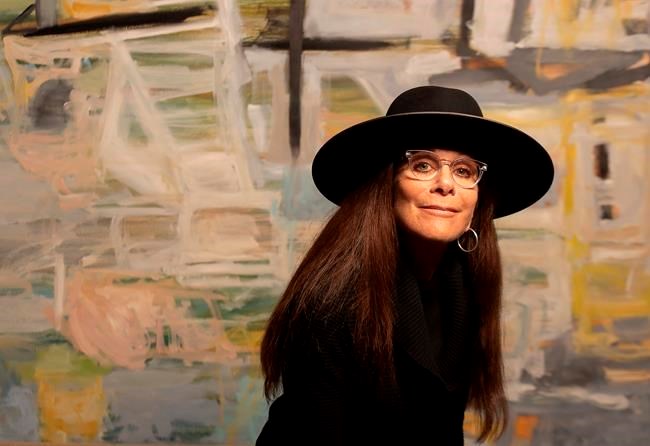NEW YORK ŌĆö A U.S. appeals court sided with a photographer Friday in a copyright dispute over how a foundation has marketed a series of Andy Warhol works of art based on one of her pictures of Prince.
The New York-based 2nd U.S. Circuit Court of Appeals ruled that the artwork created by Warhol before his 1987 death was not transformative and could not overcome copyright obligations to photographer Lynn Goldsmith. It returned the case to a lower court for further proceedings.
In a statement, Goldsmith said she was grateful to the outcome in the 4-year-old fight initiated by a lawsuit from the Andy Warhol Foundation for the Visual Arts. She said the foundation wanted to ŌĆ£use my photograph without asking my permission or paying me anything for my work.ŌĆØ
"I fought this suit to protect not only my own rights, but the rights of all photographers and visual artists to make a living by licensing their creative work ŌĆö and also to decide when, how, and even whether to exploit their creative works or license others to do so,ŌĆØ Goldsmith said.
Warhol created a series of 16 artworks based on a 1981 picture of Prince that was taken by Goldsmith, a pioneering photographer known for portraits of famous musicians. The series contained 12 silkscreen paintings, two screen prints on paper and two drawings.
ŌĆ£Crucially, the Prince Series retains the essential elements of the Goldsmith Photograph without significantly adding to or altering those elements,ŌĆØ the 2nd Circuit said in a decision written by Judge Gerard E. Lynch.
A concurring opinion written by Circuit Judge Dennis Jacobs said the ruling would not affect the use of the 16 Warhol Prince series works acquired by various galleries, art dealers, and the Andy Warhol Museum because Goldsmith did not challenge those rights.
The ruling overturned a 2019 ruling by a judge who concluded that Warhol's renderings were so different from Goldsmith's photograph that they transcended copyrights belonging to Goldsmith, whose work has been featured on over 100 record album covers since the 1960s.
U.S. District Judge John G. Koeltl in Manhattan had concluded that Warhol transformed a picture of a vulnerable and uncomfortable Prince into an artwork that made the singer an ŌĆ£iconic, larger-than-life figure.ŌĆØ
In 1984, Vanity Fair licensed one of GoldsmithŌĆÖs black-and-white studio portraits of Prince from her December 1981 shoot for $400 and commissioned Warhol to create an illustration of Prince for an article titled ŌĆ£Purple Fame.ŌĆØ
The dispute emerged after Prince's 2016 death, when the Andy Warhol Foundation for the Visual Arts licensed the use of Warhol's Prince series for use in a magazine commemorating PrinceŌĆÖs life. One of Warhol's creations was on the cover of the May 2016 magazine.
Goldsmith claimed that the publication of the Warhol artwork destroyed a high-profile licensing opportunity.
Attorney Luke Nikas said the Warhol Foundation will challenge the ruling.
ŌĆ£Over fifty years of established art history and popular consensus confirms that Andy Warhol is one of the most transformative artists of the 20th Century,ŌĆØ Nikas said in a statement. ŌĆ£While the Warhol Foundation strongly disagrees with the Second CircuitŌĆÖs ruling, it does not change this fact, nor does it change the impact of Andy WarholŌĆÖs work on history.ŌĆØ
Attorney Barry Werbin, who represented Goldsmith in the lower court, called Friday's ruling ŌĆ£a long overdue reeling in of what had become an overly-expansive application of copyright ŌĆ£transformativeŌĆØ fair use.ŌĆØ
ŌĆ£The decision helps vindicate the rights of photographers who risk having their works misappropriated for commercial use by famous artists under the guise of fair use,ŌĆØ he said.
The three-judge 2nd Circuit panel said its ruling should help clarify copyright law. It cautioned against judges making ŌĆ£inherently subjectiveŌĆØ
It repeatedly compared the copyright issues to what occurs when books are made into movies. The movie, it noted, is often quite different from the book but yet retains copyright obligations.
The appeals court also said the unique nature of Warhol's art should have no bearing on whether the artwork is sufficiently transformative to be deemed ŌĆ£fair useŌĆØ of a copyright, a legal term that would free an artist from paying licensing fees for the raw material it was based on.
ŌĆ£We feel compelled to clarify that it is entirely irrelevant to this analysis that ŌĆ£each Prince Series work is immediately recognizable as a ŌĆśWarhol,ŌĆÖŌĆØ the appeals court said. ŌĆ£Entertaining that logic would inevitably create a celebrity-plagiarist privilege; the more established the artist and the more distinct that artistŌĆÖs style, the greater leeway that artist would have to pilfer the creative
Larry Neumeister, The Associated Press




